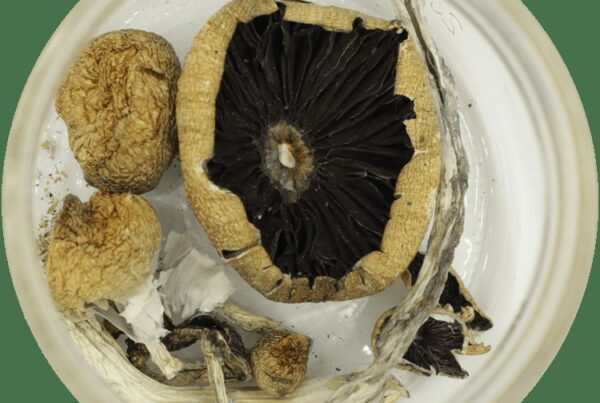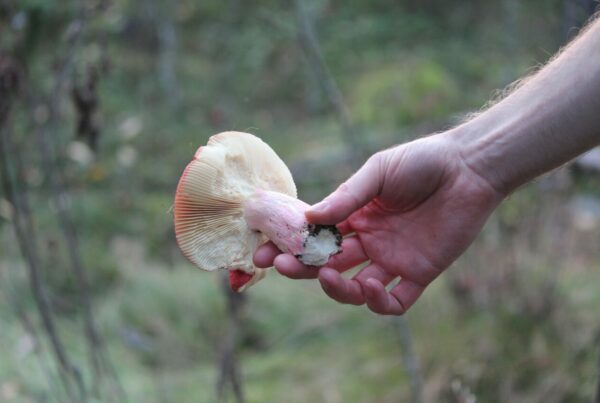Deciphering Mycelium
Mycelium, the underlying structure of fungi, operates as the digestive system for mushrooms. It actively hunts nutrients, converts them into a digestible form for the fungus, thereby nourishing the fungus. The byproduct of this process enhances the quality of the surrounding soil, supplying vital nutrients to other plants and producing a nutrient-rich biomass suitable for gardening mulch.
Apart from their significant role in mushroom growth, mycelium networks are integral to the health and development of many earthbound plants, including trees. For example, tree roots establish a symbiotic exchange with fungi wherein the tree offers the fungus carbon in the form of sugars, and reciprocally, the fungus provides the tree with vital minerals like nitrogen and phosphorus. Learn more about this symbiotic interaction here.
Fascinatingly, mycelium networks function as an underground communication channel among plants, resembling the neural networks in human brains. Emerging scientific studies hint that plants and trees might have rudimentary nervous systems that fungi could potentially influence, impacting functions like communication, memory, and learning. Moreover, mycelium boosts soil health by decomposing organic waste and neutralizing any pollutants.
If you have a keen interest in nurturing magic mushrooms, grasping the growth of mycelium is essential. Although the cultivation process could be intricate for beginners, understanding mycelium is a crucial preliminary step. While buying mushrooms from Shrooms Toronto Canada online is always an option, learning about mycelium can enrich your mushroom cultivation journey.
Mycelium’s Growth Journey
When fungal spores find a suitable environment for growth, they prompt the formation of two kinds of mycelium. The first kind, known as primary or monokaryotic mycelium, is distinguished by each cell having a single nucleus and is generally invisible to the naked eye. The second kind, termed secondary or dikaryotic mycelium, is visible and has two nuclei in each cell.
During germination, fungal spores evolve into what is known as the monokaryotic mycelium, or primary mycelium. When this primary mycelium encounters a compatible counterpart, they combine, leading to the formation of the secondary stage, referred to as the dikaryotic mycelium. It is this secondary mycelium that has the capacity to yield mushrooms or sclerotia.
Types of Mycelia
Mycelia can be categorized into three types, with two indicating successful cultivation.
- Rhizomorphic mycelia branch out like strings and are easily identifiable. They, like all other mycelia, are made up of units termed hyphae. The rhizomorphs are the network of grouped hyphae. Rhizomorphic mycelia first extend, then relay chemical signals back to the colony to signal that the forward area is appropriate for nutrient supply. The rest of the mycelia then follow. The hyphae at the forefront of the rhizomorphic mycelia release an enzyme, peroxidase, that breaks down the material in front of it for food. The hyphae then spread over the material, distributing the nutrients throughout the colony. Many cultivators prefer this type of mycelia due to the increased chances of mushroom production as the Rhizomorphic mycelia emerge from the substrate.
- Tomentose, or “Fluffy” mycelia, share several similarities with Rhizomorphic mycelia, but their strand arrangement is distinct. Although the strands may not be immediately visible, they are indeed there. Their cottony appearance signifies that the strands are clumped together. The growing environment largely determines whether your mycelia develop tomentose or rhizomorphic characteristics. The influence of the type of mycelia on growth rate or yield quantity remains a topic of debate among cultivators.
- Aerial mycelia appear when the growing conditions are less than ideal. In these circumstances, the mycelia tend to grow outwards, rather than spreading across the medium or forming a ball. Often confused with bacterial infection, this type of mycelia can impede your mushroom cultivation, leading to smaller, weaker mushrooms. Aerial mycelia usually occur due to inadequate fresh air exchange and high humidity.
Mycelium or Mould?
It’s crucial to distinguish between mould and mycelium. If you observe green, blue, grey, or black patches on or inside your fruiting box, it’s likely that your culture has been contaminated. Changes in colour are the primary indicator. However, blue spots might simply be a result of bruising.
Cobweb moulds are typically quite conspicuous. Rather than the bright The Mycelium is typically white but often appears with a greyish tinge. It has a distinct stringy and fluffy texture. Cobweb moulds and green moulds, while not harmful to humans, can adversely impact the health of mushrooms.
Shrooms Toronto Canada: Your Trusted Resource for Mushroom Information
For all things related to psychedelic mushrooms in Canada, look no further than Shrooms Toronto Canada. Our primary aim is to furnish you with essential information that ensures a safe and pleasurable mushroom journey.





